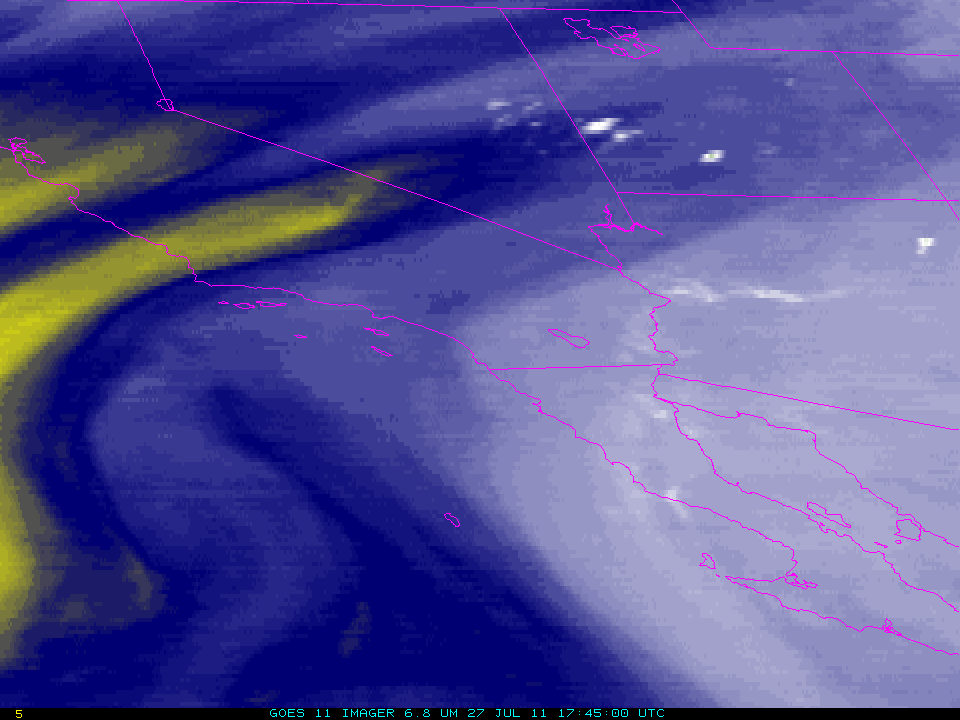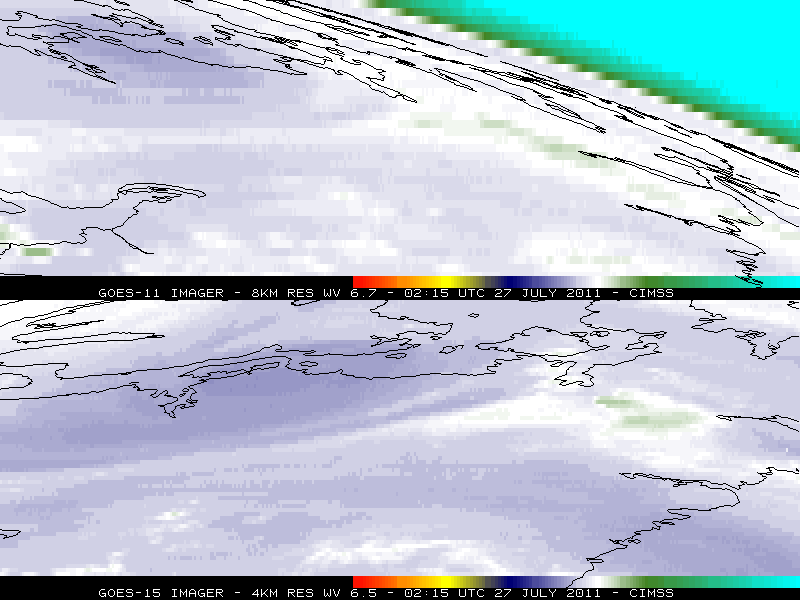GOES-15 is out of storage
The earth-viewing instruments on the GOES-15 spacecraft, which is above 90 W longitude, were turned on July 25th, and will be sending Imager and Sounder data for the next two weeks. Satellites in storage are periodically awakened to test functionality. GOES-West, currently GOES-11, will be retired at the end of the year and GOES-15 is a candidate to replace that Geostationary Satellite at 135 W Longitude.
The above loop shows Sounder data from GOES-15 and GOES-13, both remapped to the same projection, for 1746 UTC on July 27th. Note that the most bands of the Sounder imagery from GOES-15 shows cleaner signals; colder detectors onboard GOES-15 (because GOES-15 has a different configuration than GOES-13) mean that the same signal has less noise.
Visible imagery from GOES-15 and GOES-13 gives similar views of the developing tropical system off the coast of Yucatan, in part because the satellites are only separated by 15 degrees of longitude (GOES-13 sits on the Equator at 75 degrees West Longitude)
GOES-15 imager data differs from GOES-11. Whereas GOES-11 has a 12.0 micrometer channel, which is useful for observations of dust and ash (when used in conjunction with the 10.7 micrometer channel), GOES-15 has a 13.3 micron channel, which data are useful for cloud-top properties.
The GOES-15 Imager water vapor channel has 4-km resolution versus 8-km resolution on GOES-11. In the loop above, note the better depiction of gradients (despite the vastly different view angles) and the better depiction of the mid-level vortex at the southwest edge of the image.
Another comparison of 8-km resolution GOES-11 6.7 µm water vapor images with corresponding 4-km resolution GOES-15 6.5 µm water vapor images can be seen below, viewing a lobe of middle-tropospheric vorticity that was moving southeastward over Nunavut, Canada (GOES water vapor image with an overlay of GFS 500 hPa vorticity). Again, the satellite viewing angles are different, but the features and gradients (even at the high latitude of 65 degrees North) are much clearer on the GOES-15 water vapor images.



